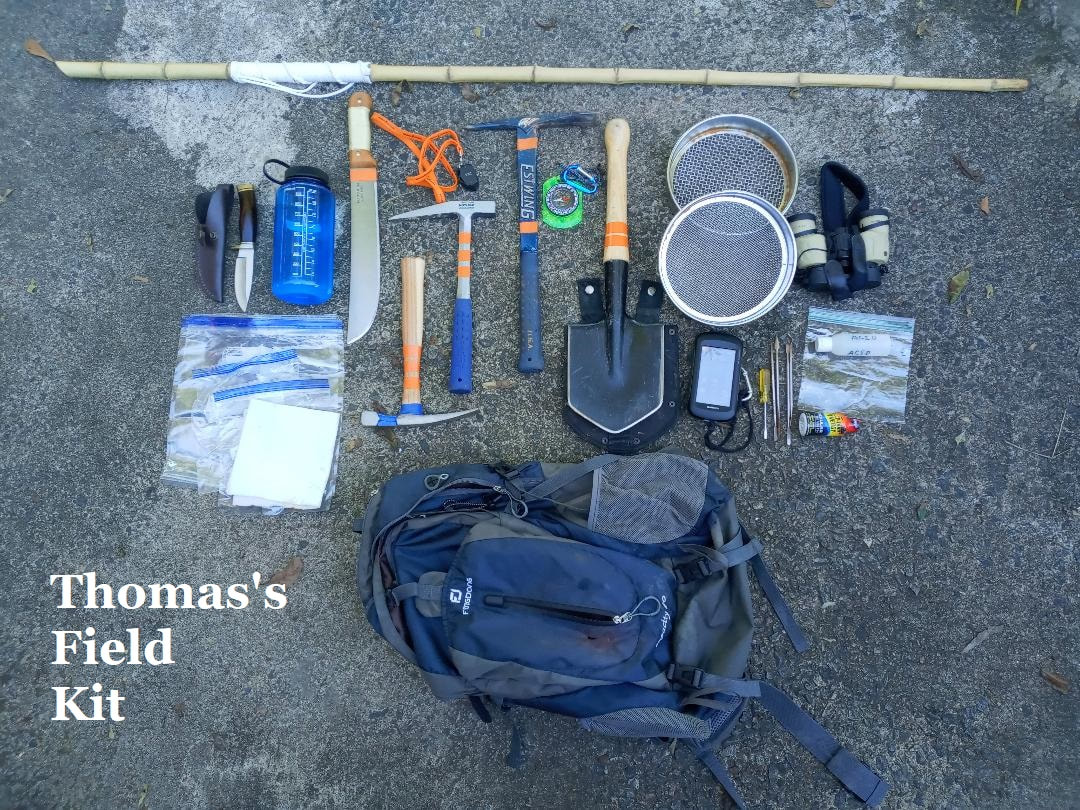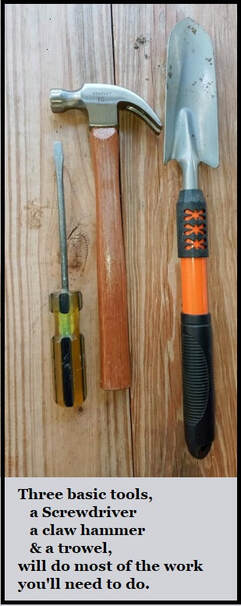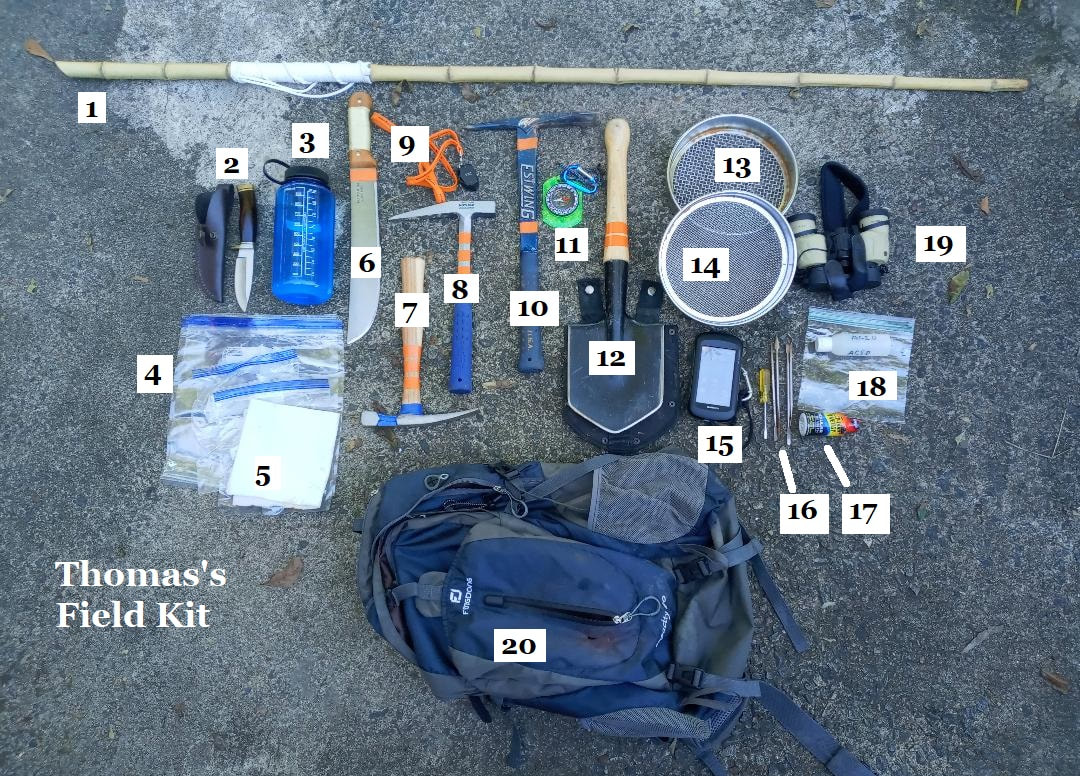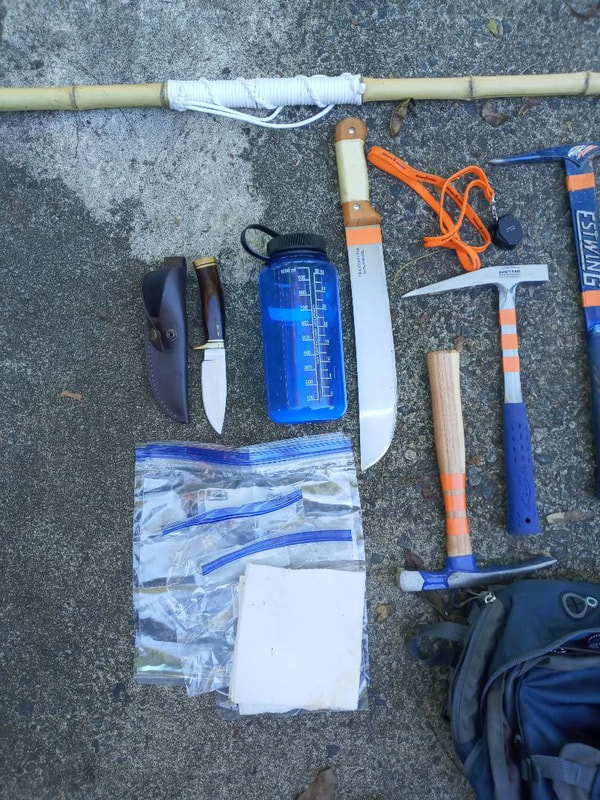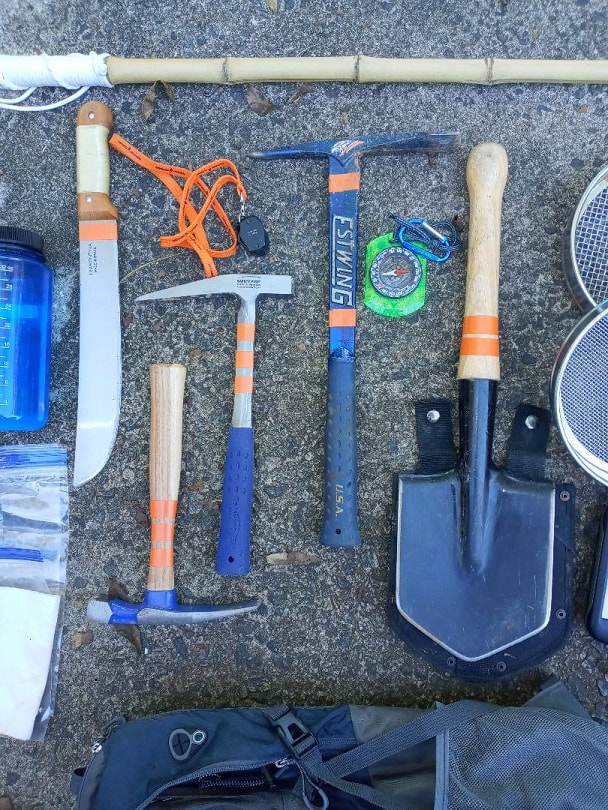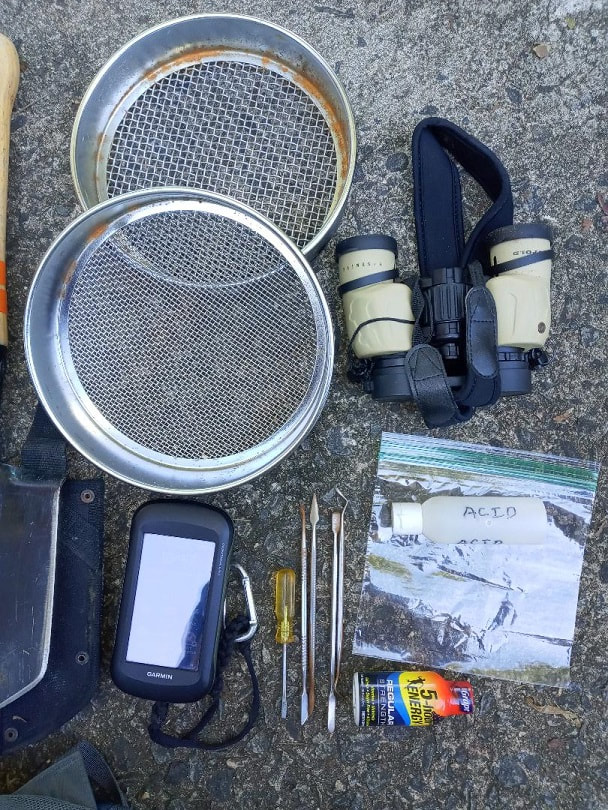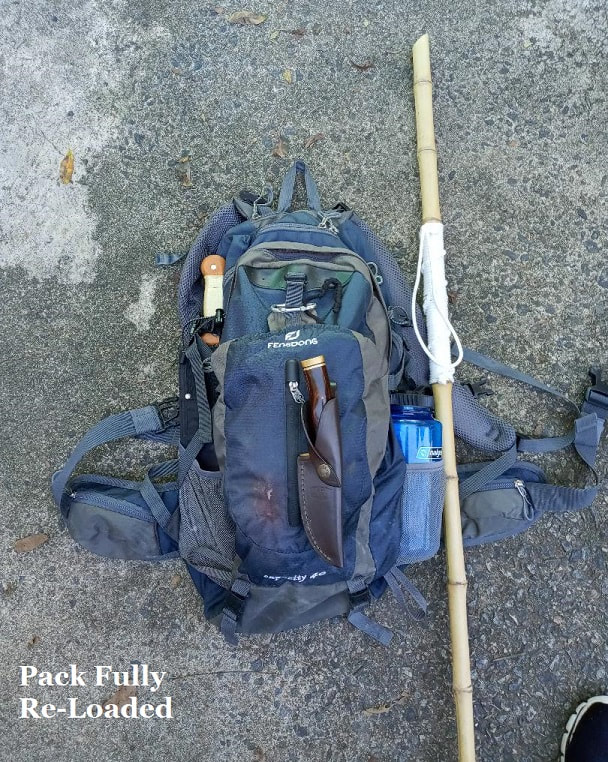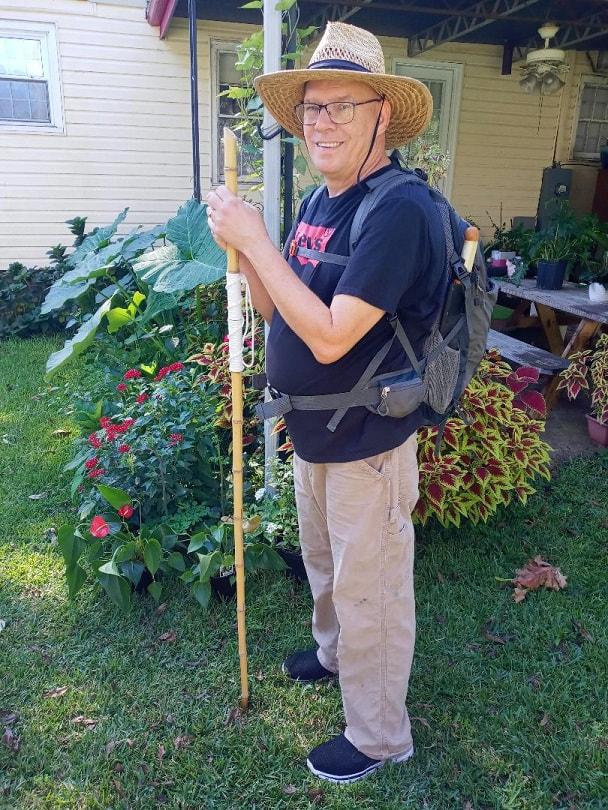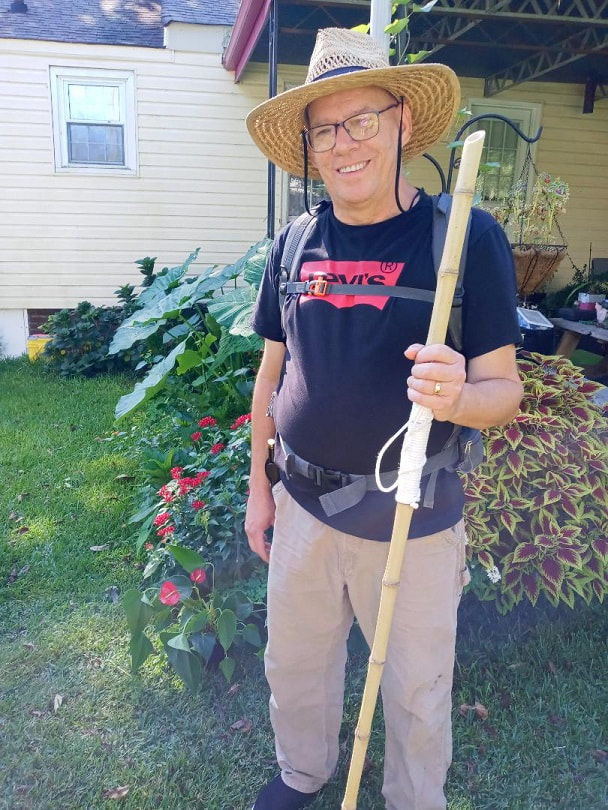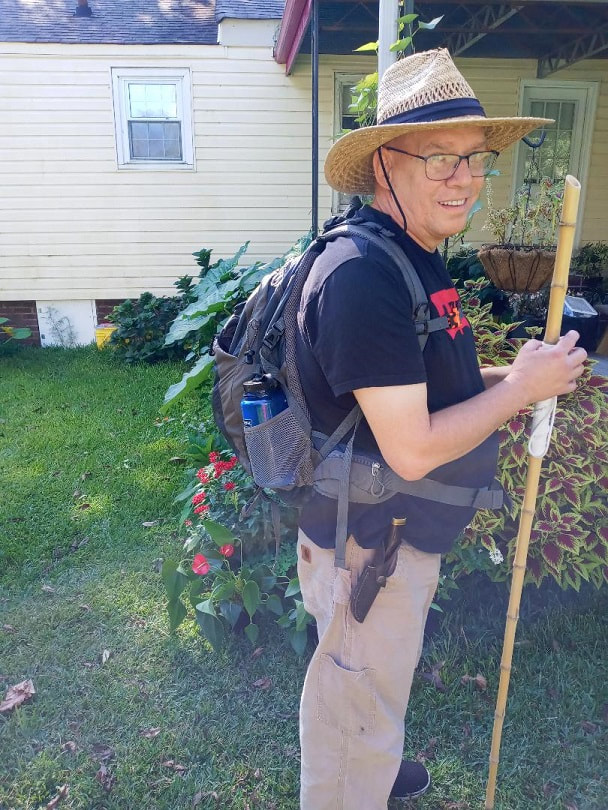26A: My Field Kit
What You Need in the Field
By Thomas Thurman
Michael Barnette, whom some of you will know, recently suggested that I create a Field Kit page. “What does one need in the field?” Since I’d been considering that very thing… here it is.
Field kits are very personal things & everyone’s is different. So I will introduce you to Thomas’s Field Kit, and it is even highly variable. The goal is to have what you need wherever you're going, but not to carry unnecessary tools.
|
What You Actually Need:
Curiosity, that is the most important thing. The next thing is getting out there. The science is in the field! You don’t need a rock hammer, or rock pick, an old claw hammer will do. You don’t need fancy tools, an old screwdriver or butter knife will do most tasks. A cheap trowel will collect a lot of fossils. |
Research!
The most important tool is your mind sharpened with research.
Do your homework, read the literature, most of what you need to know is there.
In the case of Georgia there is a rich history of literature but since the Georgia Geologic Survey was closed in 2004, nearly 20 years ago, further research into our paleontology has been spotty and often non-existent. That makes amateurs, acting professionally and respectfully, all the more important!
The most important tool is your mind sharpened with research.
Do your homework, read the literature, most of what you need to know is there.
In the case of Georgia there is a rich history of literature but since the Georgia Geologic Survey was closed in 2004, nearly 20 years ago, further research into our paleontology has been spotty and often non-existent. That makes amateurs, acting professionally and respectfully, all the more important!
Here is a link to the literature of the Georgia Geologic Survey, free downloads which can lead you. to many fossils
Georgia Geologic Survey Bulletins | Environmental Protection Division
Georgia Geologic Survey Bulletins | Environmental Protection Division
So here is my full field kit, typically I carry some variant of this, but if I don't know exactly what I'll be working with, I carry it all. That doesn't happen often.
The weight, including the walking stick and a hat, is 16.6lbs, that's with an empty water bottle. If I'm leading a group I'll add a First Aid Kit (2lbs). I'll also carry what food I'll need while I'm out. And believe it or not, my pack still has room for fossils.
Now, I'm not a collector. I do not maintain a collection. However I do collect enough to have research samples for this website and to provide education samples to teachers.
My Complete Field Kit
- Walking Stick; I’ve made several over the years as I’m bad about leaving them behind or loosing them. This one is bamboo. I sealed the hollow at the base with waterproof glue. Mine are usually 5 feet long, this one ended up at 64”. I often use them as a scale for pictures. Walking sticks should be very study but lightweight. They are useful for testing the ground as you go & give a good retort when bounced on hard rock; both hardwood & bamboo sticks do this. They harmlessly remove spiderwebs and snakes from your path.
- Sharp knife; I usually carry a Swiss Army Knife, but I have a variety I use depending on where I’m going.
- Water Bottle (At least 1), Stay hydrated out there
- Zip lock bags for samples (various sizes). I typically carry a few sandwich sized bag and a few gallon sized. Freezer bags tend to be heavier/stronger.
- Paper towels; Several uses, from padding for samples to cleaning
- Machete (short); The woods can be thick with brush. There are several inexpensive, lightweight 12” blade machetes out there. Always get the matching sheath. I sewed the sheath into my backpack.
- Rock Hammer, Chisel Head (Brick Hammer)
- Rock Hammer, Rock Pick
- Magnifying loupe. Some sort of magnifying glass is useful in sediment ID. This is a 10X Belomo Triplet Loupe
- Pick (Estwing Burpee Pick); There are many style of picks. The Estwing Burpee Pick fits in my backpack and is light weight.
- Compass; Compasses are cheap and very useful. $20.00 will get you an excellent compass. $5.00 will get you a perfectly good compass.
- Small shovel (entrenching tool); There are many styles. I’ve broken 2 folding shovels in the field so I don't like folding/collapsing shovels. I carry this small Cold Steel Special Forces 92SF model ($20.00 for the shovel, the sheath cost another 9.00, worthevery penny.) It fits in my pack, its tough, it digs happily, and the head is sharpened all the way around. This makes it useful as a light hatchet or heavy machete. It is also designed to be thrown, but for the life of me I can’t think why you would throw away of possible weapon. There is a larger one now available.
- Sieve; Coarse; #5 mesh, 4000 micron. You can certainly make a excellent sieve for 10.00. Usually I only carry this one.
- Sieve, Medium; #10 mesh, 2000 micron; I have a full set suitable for finding foraminifera, but these two are light and suffice for fieldwork.
- GPS; This is a Garmon handheld GPS with Southeastern Topo-maps loaded, even works when your cell has no signal. Best for field work, gives elevation and can lead you back to your car.
- Tools for fine work, Small probes and scrapers for fine work
- 5 hour energy, An emergency supply. Energy to make it back to your car when you’ve overexerted yourself.
- Weak acid, acid to test for carbonates (limestone)
- Binoculars, Is that exposure over there worth exploring?
- Backpack, Not expensive, but be picky. You need something which will hold up in harsh conditions. You also need something which can get stained, abused, torn…
Oh... I always wear hiking boots in the field!
